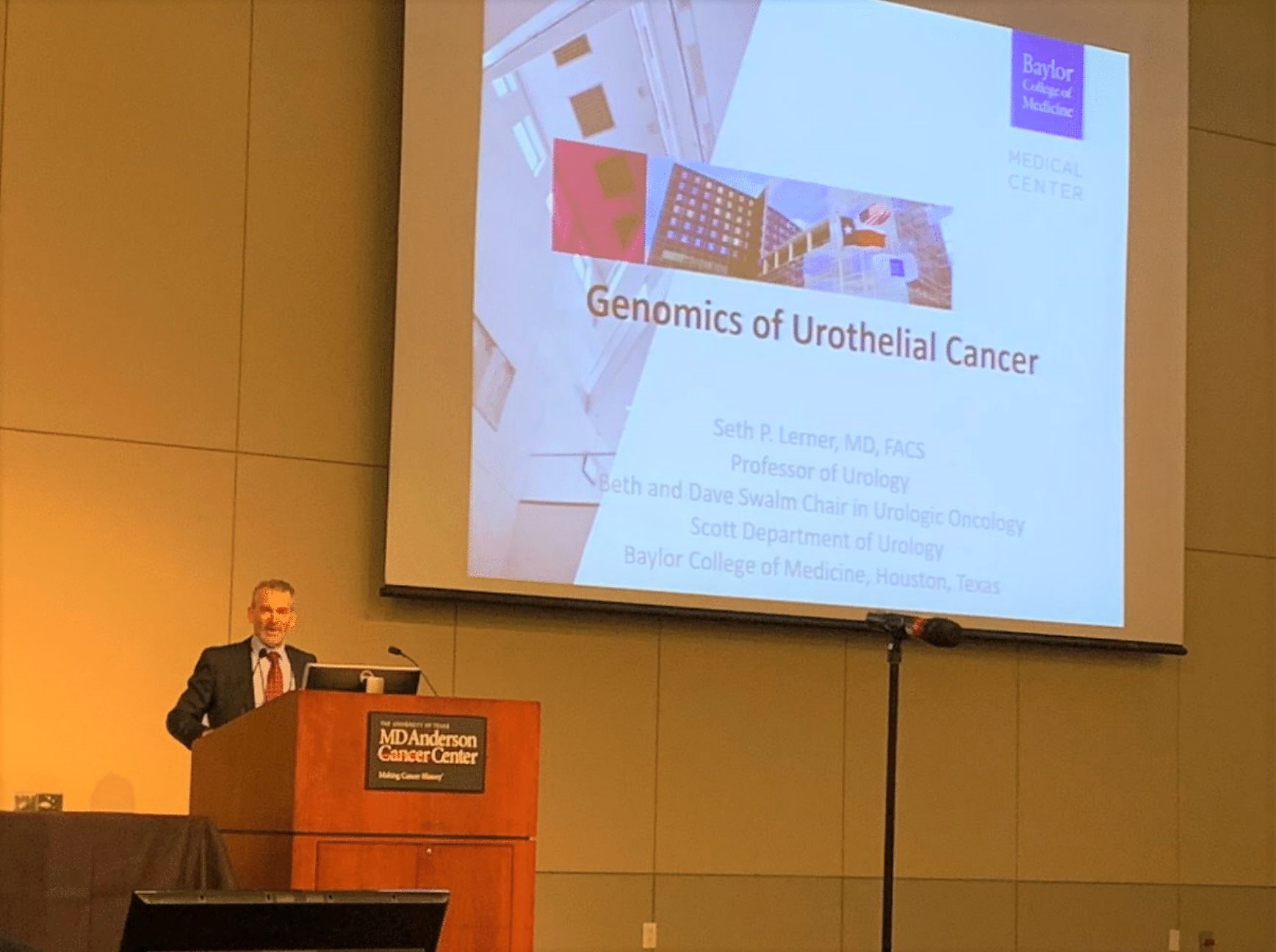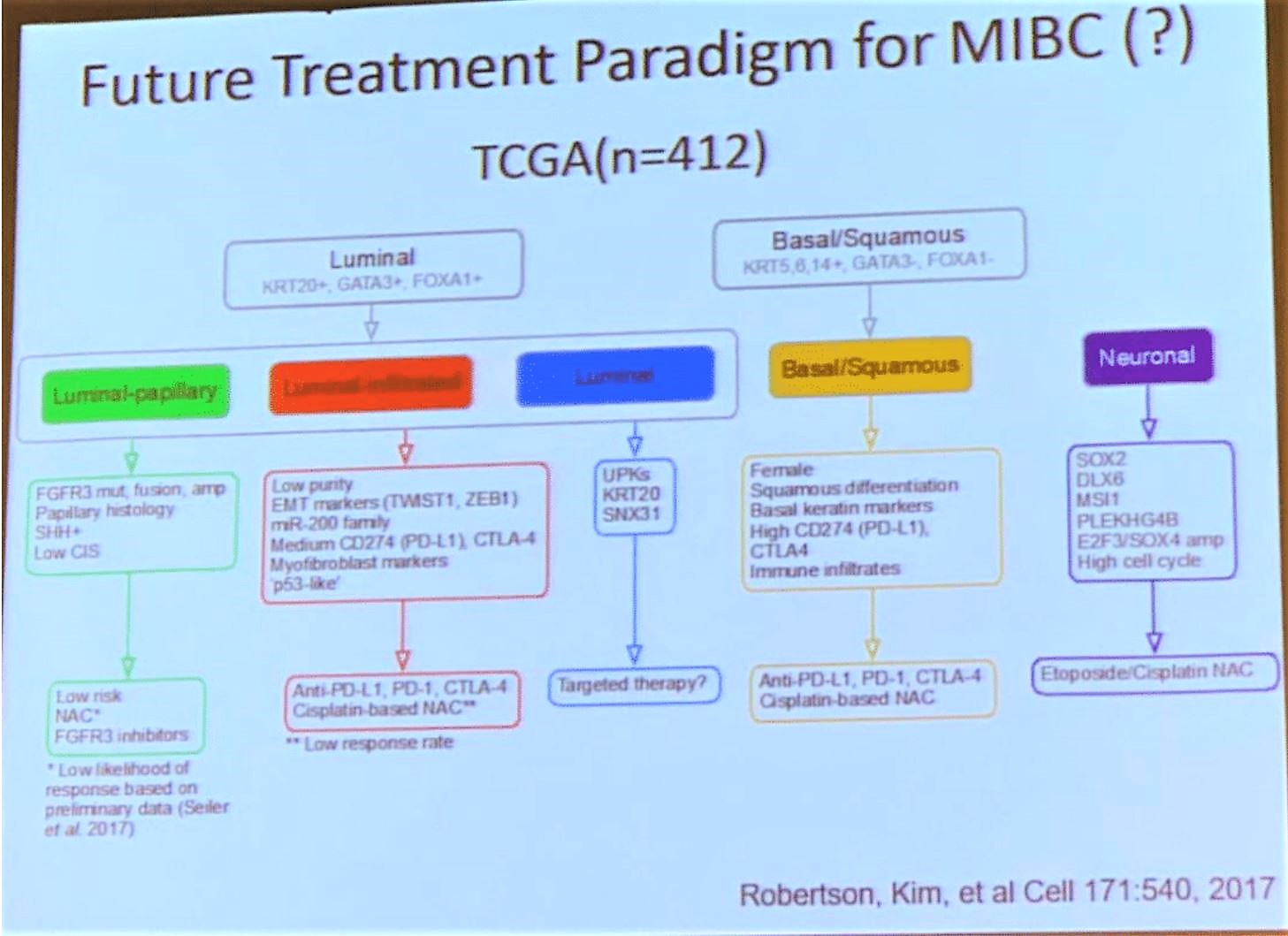One of the key findings from TCGA-analyzed data includes the finding that muscle-invasive bladder cancers have a high somatic mutation rate. This high mutation rate contributes in part to the immune sensitivity of the disease. More recently, unsupervised hierarchical clustering-patterns have found that the somatic mutations in MIBCs are driven by high APOBEC proteins, a cytosine deaminase that has normal function in the innate immune system as well as in RNA editing. Dr. Lerner noted that the role of APOBEC in further subclassifying genomic clusters is ongoing.

In general, MIBC can be divided into five subtypes: luminal-papillary, luminal-infiltrated, luminal, basal-squamous, and the neuronal subtype, based on TCGA clustering1. Molecular subtypes have been shown to be associated with differences survival. An open question under current investigation is whether we can design therapy for MIBC by molecular subtype.

Presented by: Seth Lerner, MD, Professor, Scott Department of Urology, Baylor College of Medicine, Houston, Texas
References:
1. Robertson AG, Kim J, Al-Ahmadie H, Bellmunt J, Guo G, Cherniack AD, et al. Comprehensive Molecular Characterization of Muscle-Invasive Bladder Cancer. Cell [Internet]. 2017 Oct 19;171(3):540–556.e25.
Written by Dr. Vikram M. Narayan (@VikramNarayan), Urologic Oncology Fellow and Ashish M. Kamat, MD (@UroDocAsh), Professor of Urologic Oncology & Cancer Research, University of Texas MD Anderson Cancer Center, Houston, TX at the 13th Update on the Management of Genitourinary Malignancies, The University of Texas (MDACC - MD Anderson Cancer Center) November 9-10, 2018, Dan L. Duncan Building, Houston, TX


